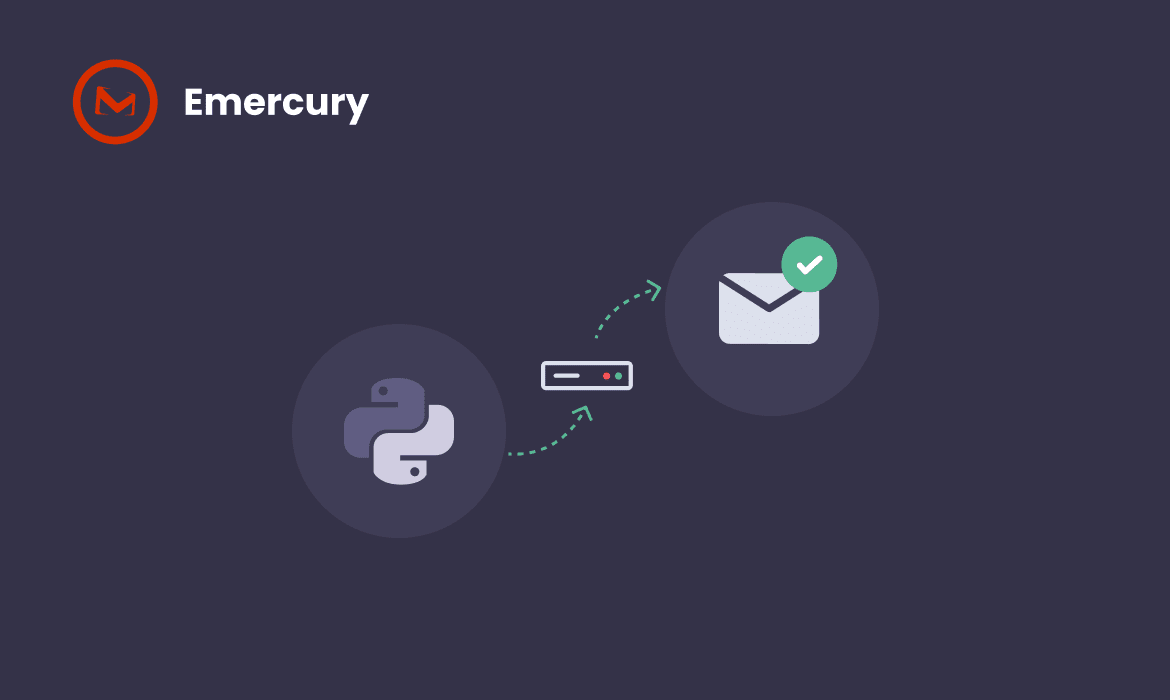Quick Answer:
Marketing emails promote products with 20-25% open rates and require explicit consent, while transactional emails deliver critical information triggered by user actions with 80-85% open rates. The key distinction: marketing emails persuade multiple recipients simultaneously, whereas transactional emails inform individual users about specific transactions within seconds.
Understanding the difference between marketing email vs transactional email can make or break your email strategy. While both serve critical roles in customer communication, they operate under different rules, achieve different open rates, and require different approaches to maximize success.
Every day, billions of emails flow through the digital ecosystem. Some promote products and build relationships. Others deliver critical information that customers need immediately. The distinction between these two email types affects everything from deliverability to compliance, yet many businesses still treat them the same way.

At Emercury, we’ve seen countless businesses struggle because they mixed marketing and transactional emails on the same infrastructure, and then wondered why their password resets started landing in spam folders after a promotional campaign.
The difference between these email types isn’t just conceptual; it requires actual infrastructure separation and strategic approach. What sets us apart is providing both the technical infrastructure to handle each email type optimally and the human expertise to help you implement separation correctly—even if you’re not a technical expert.
What Is Marketing Email?
Marketing emails are strategic communications designed to promote products, services, or brand awareness. These messages go to multiple recipients simultaneously with commercial intent. Whether you’re announcing a sale, sharing a newsletter, or launching a product, marketing emails drive engagement and revenue.
The defining characteristic of marketing emails lies in their purpose: persuasion. They aim to move recipients toward specific actions like making purchases, attending events, or engaging with content. Marketing emails require explicit consent from recipients and must comply with regulations like CAN-SPAM and GDPR.
Key Characteristics of Marketing Emails
Marketing emails share several distinguishing features that set them apart:
Strategic Timing and Planning
Businesses carefully schedule marketing emails based on audience behavior, optimal send times, and campaign objectives. This strategic approach maximizes engagement and conversion rates.
Bulk Distribution
Marketing emails go to segmented lists or entire subscriber bases simultaneously. Each recipient receives the same core message, though personalization can customize specific elements.
Commercial Purpose
Every marketing email has a business goal, whether driving sales, building awareness, or nurturing relationships. This commercial intent shapes the content and calls to action.
Lower Engagement Rates
Marketing emails typically achieve 20-25% open rates and 2-3% click-through rates. While lower than transactional emails, these rates still drive significant business value when optimized properly.
How we optimize marketing email performance:
Most email platforms treat all marketing features equally, overwhelming you with hundreds of options while making it unclear which actually drive results. Our philosophy is different: we focus on the core features that genuinely impact engagement and revenue.
Our Smart Personalization lets you show different content blocks within the same email based on subscriber data—without coding or creating multiple campaign versions. Advanced segmentation updates in real-time based on subscriber behavior, ensuring you always target the right people. A/B testing helps optimize subject lines, content, and send times based on actual performance data.
These aren’t premium features locked behind expensive tiers. They’re standard across all paid plans because we believe you should pay for sending volume, not for access to capabilities that actually drive results.
What Is Transactional Email?
Transactional emails are automated messages triggered by specific user actions or events. These one-to-one communications deliver essential information that recipients expect and need. From password resets to order confirmations, transactional emails facilitate ongoing transactions and account management.
Unlike marketing messages, transactional emails focus on information delivery rather than persuasion. Recipients actively trigger these emails through their actions, creating high relevance and urgency. This expectation drives impressive 80-85% open rates, making transactional emails powerful touchpoints in the customer journey.
Key Characteristics of Transactional Emails
Transactional emails possess unique attributes that ensure their effectiveness:
Triggered by User Actions
Every transactional email responds to specific user behavior. Creating an account, making a purchase, or requesting information automatically generates these messages.
Immediate Delivery
Speed matters for transactional emails. Recipients expect these messages within seconds or minutes of triggering actions. Delays can cause confusion and damage trust.
Personalized Content
Transactional emails contain information specific to individual recipients and their actions. Order details, account information, and transaction data make each message unique.
High Engagement Rates
With 80-85% open rates, transactional emails achieve the highest engagement of any email type. Recipients often reference these messages multiple times for important information.
Why transactional email delivery demands specialized infrastructure:
Those impressive 80-85% open rates only matter if emails actually reach the inbox within seconds. Most businesses discover their transactional email infrastructure is inadequate only when customers start complaining about missing password resets or delayed order confirmations.
Our SMTP Relay service is specifically built for transactional email requirements: lightning-fast processing that sends within milliseconds, automatic scaling during traffic spikes, and redundant infrastructure across multiple data centers. More importantly, transactional emails route through completely separate infrastructure from marketing campaigns, protecting delivery even if a promotional campaign generates complaints.
When transactional delivery issues arise—and they inevitably do—you’re not troubleshooting alone with documentation. Our deliverability experts can diagnose why order confirmations suddenly started bouncing or why certain ISPs are delaying your password resets. This human support makes reliable transactional email accessible even for teams without dedicated email infrastructure specialists.
Core Differences Between Marketing Email vs Transactional Email
Understanding the fundamental differences between these email types helps optimize your overall strategy:
Purpose and Intent
Marketing emails persuade and promote, while transactional emails inform and confirm. This core difference shapes every aspect of creation and delivery.
Marketing emails exist to drive business outcomes. They showcase products, announce promotions, and build brand relationships. Success means converting recipients into customers or deeper engagement.
Transactional emails serve operational purposes. They confirm actions, provide receipts, and deliver requested information. Success means timely, accurate delivery of expected content.
Consent Requirements
Legal requirements differ significantly between email types, affecting how you build and manage lists.
Marketing emails require explicit opt-in consent under most regulations. Recipients must actively agree to receive promotional content. Unsubscribe options must appear in every message.
Transactional emails operate under legitimate interest provisions. Since recipients trigger these messages through their actions, explicit marketing consent isn’t required. However, mixing promotional content changes these requirements.
Delivery Speed and Timing
Timing strategies vary dramatically between email types based on recipient expectations.
Marketing emails follow strategic schedules optimized for engagement. Marketers test send times, consider time zones, and coordinate with campaigns. Flexibility allows optimization based on performance data.
Transactional emails demand immediate delivery. Password resets, purchase confirmations, and security alerts lose value with delays. Automated systems must trigger and send these messages within seconds.
Content and Design
Different objectives require different approaches to content creation and design.
Marketing emails emphasize visual appeal and persuasive copy. Eye-catching designs, compelling headlines, and clear calls to action drive desired behaviors. Creativity and branding take priority.
Transactional emails prioritize clarity and information accessibility. Clean layouts, scannable content, and essential details matter most. While branding remains important, function outweighs form.
Performance Metrics
Success measurement differs based on email purpose and recipient expectations.
Marketing emails focus on conversion metrics: open rates, click-through rates, and ROI. These metrics guide optimization and demonstrate campaign effectiveness.
Transactional emails emphasize delivery metrics: speed, accuracy, and reliability. While engagement matters, operational success takes precedence.
Ready to start?
Secure your place on the waitlist now and unlock developer-friendly, reliable, cost-free SMTP Relay email delivery the moment we launch!
How Emercury Optimizes Both Email Types for Maximum Impact
At Emercury, we understand that successful email programs require excellence in both marketing and transactional communications. Our platform provides specialized infrastructure and tools for each email type while maintaining unified management and reporting capabilities.
Emercury’s Dual-Infrastructure Approach
Our architecture separates marketing and transactional email streams to protect deliverability while maximizing performance. This separation ensures that marketing campaign fluctuations never affect critical transactional message delivery.
Dedicated IP Pools
Emercury maintains separate IP addresses for marketing and transactional emails. This isolation protects transactional reputation from marketing performance variations. Your password resets and order confirmations always reach the inbox, regardless of promotional campaign results.
Optimized Sending Protocols
Different email types require different sending approaches. Our marketing infrastructure supports bulk sending with advanced throttling and scheduling. Our transactional infrastructure prioritizes speed and reliability for immediate delivery.
Intelligent Routing
Our system automatically routes emails through the appropriate infrastructure based on type and purpose. This intelligent routing happens seamlessly, ensuring optimal delivery for every message.
Emercury SMTP Relay: Built for Transactional Excellence
Our SMTP Relay service delivers transactional emails with the speed and reliability your customers expect. Purpose-built for triggered messages, it handles everything from simple password resets to complex multi-step transactions.
Lightning-Fast Processing
Emercury’s SMTP Relay processes and sends transactional emails in milliseconds. Our distributed infrastructure ensures consistent performance even during traffic spikes. Multiple data centers provide redundancy and minimize latency globally.
Developer-Friendly Integration
Simple SMTP or API integration gets you sending in minutes. Comprehensive documentation and code examples accelerate implementation. Our support team helps optimize your integration for maximum performance.
Real-Time Monitoring
Track every transactional email with detailed logs and analytics. Monitor delivery rates, bounce handling, and engagement metrics. Identify and resolve issues before they affect customers.
Advanced Features
Dynamic content insertion personalizes every message. Attachment handling supports receipts and documents. Webhook notifications enable real-time event processing. Template management simplifies consistent branding across all transactional emails.
Emercury Email Marketing Platform: Driving Engagement and Revenue
Our email marketing platform empowers performance marketers to create, send, and optimize campaigns that convert. Built for serious marketers, it combines powerful features with intuitive workflows.
Advanced Segmentation Engine
Create precise audience segments based on behavior, preferences, and engagement. Dynamic segments update automatically as subscriber data changes. Layer multiple criteria for hyper-targeted campaigns that resonate.
Automation Workflows
Build sophisticated automation sequences that respond to subscriber behavior. Welcome series, abandonment campaigns, and re-engagement flows run automatically. Visual workflow builder makes complex automations simple to create and manage.
A/B Testing Framework
Test every element from subject lines to send times. Statistical significance calculations ensure reliable results. Automatic winner selection maximizes campaign performance.
Performance Analytics
Comprehensive reporting reveals what drives results. Track opens, clicks, conversions, and revenue attribution. Compare campaigns, identify trends, and optimize future sends. Export data for deeper analysis or integration with other tools.
WooCommerce Email Marketing Integration
Emercury’s WooCommerce plugin seamlessly connects your store with our powerful email infrastructure. Handle both marketing campaigns and transactional messages from one integrated platform.
Automated Transactional Emails
Replace WooCommerce’s default emails with Emercury’s reliable delivery. Order confirmations, shipping notifications, and account updates send instantly. Customize templates to match your brand while maintaining clarity.
Behavioral Marketing Triggers
Convert browsers into buyers with targeted campaigns. Abandoned cart reminders recover lost sales. Product recommendations drive additional purchases. Win-back campaigns re-engage dormant customers.
Unified Customer Data
Sync customer information, purchase history, and behavior automatically. Use this rich data for segmentation and personalization. Track customer lifetime value and optimize accordingly.
Revenue Attribution
Connect email campaigns directly to sales results. Track which messages drive purchases and calculate ROI. Optimize campaigns based on actual revenue impact, not just engagement metrics.
Best Practices for Marketing Email vs Transactional Email
Maximizing success with both email types requires following proven best practices tailored to each category.
Marketing Email Best Practices
Build Quality Lists Through Permission
Always obtain explicit consent before adding subscribers. Use double opt-in to verify email addresses and intent. Clear expectations during signup reduce unsubscribes and complaints.
Segment for Relevance
Divide your list based on demographics, behavior, and preferences. Send targeted content that resonates with each segment. Relevant emails achieve higher engagement and conversion rates.
Optimize Send Times
Test different days and times to find optimal engagement windows. Consider time zones for geographically diverse lists. Use automation to deliver at individual optimal times.
Craft Compelling Subject Lines
Create curiosity without being misleading. Personalization can increase open rates by 26%. Keep subject lines under 60 characters for mobile optimization.
Design for Mobile First
Over 60% of emails open on mobile devices. Use responsive templates that adapt to screen sizes. Test rendering across devices and email clients.
Templates and design tools that actually help:
Most platforms offer hundreds of email templates that all look dated or require extensive customization. We provide mobile-first responsive templates designed by professionals who understand conversion psychology—not just visual appeal.
Our drag-and-drop editor makes customization straightforward without requiring design or coding skills. Smart Personalization integrates directly into the editor, letting you add conditional content blocks as easily as regular text. Real-time preview shows exactly how emails render on different devices.
For businesses needing completely custom designs, our team can create professional templates matching your exact brand specifications. This service includes deliverability optimization, cross-client testing, and ongoing support—ensuring your custom designs both look professional and reach the inbox.
Transactional Email Best Practices
Prioritize Speed and Reliability
Implement robust infrastructure that handles traffic spikes. Use queuing systems to manage volume without delays. Monitor delivery times and address bottlenecks immediately.
Maintain Clear Information Hierarchy
Lead with the most important information. Use headers and formatting to improve scannability. Include all necessary details without overwhelming recipients.
Include Relevant Cross-References
Add order numbers, transaction IDs, and reference codes. Link to account pages for additional information. Make it easy for customers to find related details.
Balance Branding with Function
Maintain consistent brand elements for recognition. Keep designs clean and focused on information delivery. Avoid heavy graphics that slow loading or obscure content.
Test Thoroughly Before Launch
Verify all dynamic content populates correctly. Test across email clients and devices. Confirm links work and lead to correct destinations.
Testing and monitoring made manageable:
Comprehensive transactional email testing requires checking dynamic content population, verifying trigger logic, confirming delivery speeds, and testing across multiple email clients. Most businesses discover problems only after customers complain.
Our SMTP Relay includes detailed logging that shows exactly what’s happening with every transactional email. See dynamic content before sending, track delivery times, monitor bounce patterns, and identify rendering issues—all through our analytics dashboard.
When you’re implementing transactional emails for the first time or troubleshooting existing problems, our team can review your setup and identify potential issues before they affect customers. This proactive approach prevents the delivery problems that manual testing often misses.
Legal Compliance and Regulations
Understanding regulatory requirements helps avoid penalties while building trust with recipients. Requirements vary by region and email type.
Marketing Email Regulations
CAN-SPAM Act (United States)
Requires accurate sender information and clear subject lines. Must include physical address and unsubscribe mechanism. Penalties reach $51,744 per violation.
GDPR (European Union)
Mandates explicit consent for marketing communications. Provides data access and deletion rights. Fines can reach €20 million or 4% of global revenue.
CASL (Canada)
Requires express consent before sending commercial messages. Mandates clear sender identification and unsubscribe options. Penalties reach $10 million per violation.
Transactional Email Regulations
Transactional emails enjoy more flexibility under most regulations. They can be sent without marketing consent when serving legitimate interests. However, adding promotional content changes their classification.
Maintaining Transactional Status
Keep promotional content under 20% of message content. Ensure primary purpose remains informational. Avoid using transactional emails as marketing opportunities.
Documentation and Audit Trails
Maintain logs of triggering actions and sent messages. Document the legitimate interest for each transactional email type. Regular audits ensure ongoing compliance.
Compliance support built-in:
Email compliance is complex and constantly evolving. CAN-SPAM, GDPR, CASL—each has specific requirements, and mistakes carry significant penalties.
Our platform enforces compliance best practices automatically. Unsubscribe links appear in marketing emails. Suppression lists process immediately. Required sender information includes automatically. These safeguards prevent the compliance violations that result from manual management oversights.
For businesses operating in multiple regions with varying regulations, our team can advise on requirements specific to your situation. We can’t provide legal advice, but we can explain technical requirements and help implement compliant email practices. This guidance proves invaluable for businesses expanding internationally or navigating complex regulatory environments.
Measuring Success and Optimization
Different metrics matter for marketing versus transactional emails. Understanding what to measure guides optimization efforts.
Marketing Email Metrics
Engagement Metrics
Open rates indicate subject line effectiveness. Click-through rates measure content relevance. Conversion rates show bottom-line impact.
List Health Metrics
Growth rate tracks acquisition success. Unsubscribe rate signals content relevance. Complaint rate affects sender reputation.
Revenue Metrics
Revenue per email calculates direct impact. Customer lifetime value guides long-term strategy. ROI justifies program investment.
Transactional Email Metrics
Delivery Metrics
Delivery rate confirms infrastructure reliability. Bounce rate identifies data quality issues. Speed metrics ensure timely arrival.
Operational Metrics
Error rates highlight system problems. Template rendering issues affect user experience. API response times impact application performance.
Engagement Metrics
While secondary, engagement still matters. Open rates confirm message relevance. Click-through rates on support links indicate clarity.
Advanced Strategies for Email Excellence
Sophisticated approaches elevate both email types beyond basic functionality.
Unified Customer Journey Mapping
Map how marketing and transactional emails work together across the customer lifecycle. Identify touchpoints where each email type adds value. Coordinate messaging for consistent experience.
Welcome series combine both email types effectively. Marketing emails introduce brand value and benefits. Transactional emails confirm account creation and provide access. Together, they create comprehensive onboarding.
Progressive Profiling Through Transactional Interactions
Use transactional touchpoints to gather preference data. Add optional surveys to order confirmations. Include preference centers in account notifications. Build richer profiles without intrusive requests.
Behavioral Trigger Optimization
Analyze transactional email engagement to inform marketing strategy. High engagement with shipping notifications suggests interest in product updates. Password reset frequency indicates potential usability issues. Use these insights to improve both email types.
Cross-Channel Orchestration
Coordinate emails with other communication channels. SMS can supplement urgent transactional emails. Push notifications provide real-time updates. Social media extends marketing campaign reach. Emercury’s platform integrates these channels for unified orchestration.
Why Performance Marketers Choose Our Platform
Emercury stands apart by understanding that serious email marketers need more than basic tools. Our platform delivers the power, flexibility, and reliability that performance-focused businesses demand.
Purpose-Built for Performance
Every feature targets marketers who measure success by results. Advanced segmentation drives relevance. Detailed analytics reveal optimization opportunities. Flexible APIs enable custom integrations.
Reliability You Can Count On
99.9% uptime SLA ensures your emails always send. Redundant infrastructure prevents single points of failure. Global delivery network minimizes latency. Proactive monitoring identifies issues before they affect delivery.
Expert Support When You Need It
Our support team knows email marketing inside and out. Get help with strategy, not just technical issues. Access deliverability experts who improve inbox placement. Receive optimization recommendations based on your specific goals.
Transparent Pricing That Scales
No hidden fees or surprise charges. Volume discounts reward growth. Flexible plans adapt to your needs. Clear pricing makes budgeting simple.
Continuous Innovation
Regular platform updates add new capabilities. Customer feedback drives product development. Early access to beta features keeps you ahead. Investment in infrastructure ensures long-term performance.
Making the Transition to Specialized Email Infrastructure
Moving from mixed infrastructure to separated marketing and transactional systems requires planning but delivers significant benefits.
1. Assessment Phase
Evaluate current email performance and identify issues. Document all email types and their purposes. Analyze delivery rates and engagement metrics. Calculate the cost of poor deliverability.
2. Planning Phase
Design new architecture with separated streams. Map migration path for existing integrations. Develop testing protocols for validation. Create rollback plans for risk mitigation.
3. Implementation Phase
Start with transactional emails for immediate impact. Migrate marketing campaigns in phases. Monitor performance throughout transition. Optimize based on results.
4. Optimization Phase
Fine-tune delivery settings for each stream. Implement advanced features gradually. Expand automation and personalization. Scale successful strategies across programs.
Conclusion
Master Both Email Types for Maximum Business Impact
The distinction between marketing email vs transactional email extends far beyond simple definitions. These email types require fundamentally different infrastructure, strategies, and optimization approaches to maximize their potential.
Marketing emails build relationships and drive revenue through strategic campaigns, personalization, and engagement optimization. Transactional emails deliver critical information with exceptional reliability and speed. Success in modern email marketing means excelling at both while keeping them properly separated.
Why Infrastructure Separation Isn’t Optional
Businesses that mix marketing and transactional emails on the same infrastructure eventually face painful choices: throttle marketing campaigns to protect transactional delivery, or risk having password resets land in spam folders after promotional campaigns generate complaints.
Proper separation eliminates these tradeoffs. Marketing campaigns optimize for engagement and conversions without affecting transactional reliability. Transactional emails deliver with guaranteed speed regardless of promotional email performance.
The Platform That Handles Both Optimally
We provide specialized infrastructure for each email type—marketing platform for campaigns, SMTP Relay for transactional messages—while maintaining unified management and reporting. This separation protects deliverability while the unified interface simplifies operations.
For marketing emails:
- Smart Personalization for relevant content without coding
- Real-time Smart Segments that update based on behavior
- Visual automation builder for sophisticated sequences
- A/B testing framework for data-driven optimization
- All features available across paid plans
For transactional emails:
- Lightning-fast processing (milliseconds)
- Automatic scaling for traffic spikes
- 100 free emails/day permanently
- Comprehensive delivery analytics
- Integration support from actual experts
For both email types:
- Human deliverability support when issues arise
- Proactive monitoring and guidance
- Transparent pricing that scales with volume
- Infrastructure reliability you can depend on
Getting Started Is Straightforward
Marketing platform: Create your account and begin building campaigns with full feature access. Import your lists, explore Smart Personalization, and set up your first automation sequence.
SMTP Relay: Start with 100 free emails daily to test transactional delivery. Simple SMTP credentials or API integration gets you sending within minutes. Scale to paid plans when volume grows.
Need guidance? Contact our team to discuss your specific email requirements. We’ll analyze your current approach, recommend optimal infrastructure separation, and provide implementation guidance.
The Cost of Getting This Wrong
When businesses mix email types inappropriately or use inadequate infrastructure, the consequences compound:
Deliverability suffers: Marketing reputation problems affect critical transactional emails. Password resets land in spam. Order confirmations delay or bounce.
Customer trust erodes: Missing transactional emails create support nightmares and damage confidence in your business operations.
Revenue decreases: Marketing campaigns underperform when deliverability issues prevent inbox placement. Promotional opportunities miss target audiences.
Compliance risks increase: Improper handling of marketing consent, transactional message content, or suppression management creates regulatory exposure.
Email Excellence Requires Both Technical and Strategic Expertise
Technical infrastructure alone doesn’t ensure email success. Understanding when to use each email type, how to optimize delivery, what regulations apply, and how to measure success requires expertise that many businesses lack internally.
Our platform provides both the technical foundation and the human expertise needed for email excellence. Infrastructure separates email types appropriately while automation and features optimize performance. Expert support helps you implement strategies that actually work for your specific business context.
Whether you’re sending promotional campaigns or transactional messages, the right platform and guidance ensure emails reach inboxes and drive intended results. Master both marketing email vs transactional email with infrastructure built specifically for each type’s requirements.
Your email program is too important to trust to platforms that treat both email types the same or force you to choose between capabilities you need. Partner with a provider that understands both marketing and transactional email excellence—and provides the tools and support to achieve it.
FAQs
What is the main difference between marketing email and transactional email?
Marketing emails promote products or services to drive sales with 20-25% open rates, while transactional emails deliver essential information triggered by user actions with 80-85% open rates. Marketing requires explicit consent and targets multiple recipients, whereas transactional emails inform individual users about specific transactions without requiring marketing consent.
Can you include marketing content in transactional emails?
Limited promotional content is acceptable following the 80/20 rule: 80% transactional information, 20% marketing material. However, regulations vary by region—GDPR and CASL have zero-tolerance for commercial intent, while US CAN-SPAM allows some flexibility. Too much promotional content changes classification and affects deliverability.
Do transactional emails need unsubscribe links?
Pure transactional emails don’t require unsubscribe links under most regulations since they contain essential service information triggered by user actions. However, if they include any promotional content, unsubscribe options become legally necessary and the email must comply with marketing email regulations.
Why do transactional emails have higher open rates?
Transactional emails achieve 80-85% open rates because recipients actively trigger them through specific actions and expect the information immediately. Users often reference these messages multiple times for important details like order confirmations, password resets, or shipping updates, creating natural engagement.
How to write effective marketing emails vs transactional emails?
Marketing emails need compelling subject lines, visual appeal, and clear CTAs to drive conversions. Focus on persuasive copy and strategic timing. Transactional emails require clarity, scannable layouts, and immediate delivery of essential information. Prioritize function over form while maintaining brand consistency.
Should I use different IP addresses for marketing and transactional emails?
Yes, absolutely. Separate IP addresses prevent marketing campaign performance from affecting transactional deliverability. Marketing emails typically have lower engagement rates that can damage sender reputation. Using dedicated IPs ensures critical transactional messages like password resets always reach the inbox regardless of promotional campaign results.
What are examples of transactional emails?
Common transactional emails include order confirmations, password resets, account creation notifications, shipping updates, payment receipts, subscription confirmations, security alerts, and booking confirmations. These messages provide essential information about user-initiated actions or account status requiring immediate delivery.
What are examples of marketing emails?
Marketing emails include newsletters, promotional offers, product announcements, event invitations, seasonal campaigns, re-engagement emails, loyalty program updates, and educational content. These messages aim to drive engagement, build brand awareness, generate sales, or nurture customer relationships through strategic commercial communication.
How quickly should transactional emails be delivered?
Transactional emails must deliver within seconds to minutes of triggering. Speed is critical for password resets, purchase confirmations, and security alerts where delays cause confusion and damage trust. Marketing emails follow strategic schedules optimized for engagement, allowing flexibility in timing based on audience behavior.
What triggers a transactional email?
Transactional emails are triggered by specific user actions including making purchases, creating accounts, resetting passwords, updating profiles, requesting information, completing bookings, or initiating refunds. Automated systems detect these actions and immediately send personalized messages containing transaction-specific information relevant to that individual user.
How do GDPR regulations affect transactional emails?
GDPR allows transactional emails without explicit marketing consent when they serve legitimate interests and contain only necessary transaction information. However, you must process data lawfully, maintain transparency about usage, and avoid including unnecessary promotional content. Adding marketing material requires explicit consent and full GDPR compliance.
What is the CAN-SPAM Act requirement for marketing emails?
CAN-SPAM requires accurate “From” names and email addresses, non-deceptive subject lines, physical postal address inclusion, clear identification as advertisement (if applicable), and prominent unsubscribe mechanisms honored within 10 business days. Violations can result in penalties up to $51,744 per email sent.
Can I send transactional emails to unsubscribed users?
Yes, you can send purely transactional emails to unsubscribed users since they contain essential service information about account activity or transactions. However, these emails must contain zero promotional content and relate directly to user-initiated actions or critical account updates requiring immediate communication.
How do I improve marketing email open rates?
Improve open rates through personalized subject lines (increases opens by 26%), optimal send time testing, list segmentation for relevance, maintaining sender reputation through list hygiene, mobile-optimized preview text, and A/B testing different approaches. Regular cleaning of inactive subscribers also boosts overall engagement metrics.
What’s the best way to separate marketing and transactional emails?
Use different subdomains ([email protected] vs [email protected]), separate IP addresses for each stream, distinct sending infrastructure, and different email service providers if needed. This technical separation protects transactional deliverability from marketing campaign fluctuations while enabling optimized management of each type.
How does mixing email types affect deliverability?
Mixing marketing and transactional emails on the same infrastructure creates serious risks. Marketing campaigns with lower engagement rates can damage IP reputation, causing critical transactional emails to land in spam. This affects password resets, order confirmations, and other essential communications customers expect immediately.
What metrics should I track for marketing vs transactional emails?
Marketing emails focus on open rates (20-25% average), click-through rates (2-3%), conversion rates, unsubscribe rates, and revenue per email. Transactional emails prioritize delivery rate (should be 99%+), speed metrics (seconds to inbox), bounce rates, and error rates rather than engagement.
How do email regulations differ between countries?
US CAN-SPAM allows some promotional content in transactional emails if not the primary purpose. Canadian CASL and EU GDPR have zero-tolerance for commercial content in transactional emails. Australia’s Spam Act requires consent for marketing but exempts factual transactional messages. Always comply with the strictest applicable regulation.
What infrastructure do I need for both email types?
Optimal infrastructure includes separate sending domains, dedicated IP pools for each type, specialized platforms (marketing automation for campaigns, SMTP relay for transactional), real-time monitoring for both streams, and unified reporting dashboards. This separation ensures maximum deliverability while maintaining operational efficiency across all email communications.



